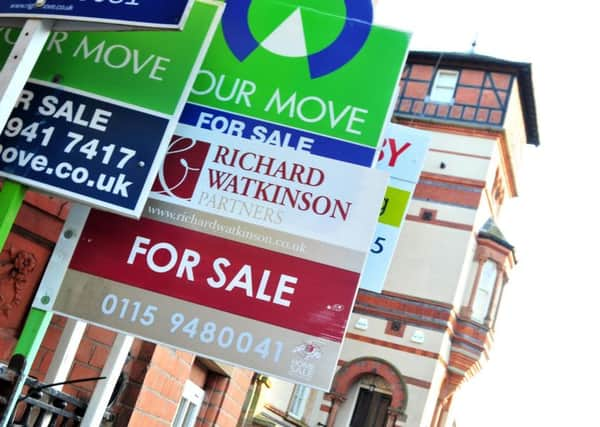North-South house prices could start to narrow, predict experts


The Hometrack UK Cities House Price Index, which tracks price movements across the UK’s 20 biggest cities, found values in Bristol increased by 9.6 per cent across the year to December 2016.
Manchester saw the second highest price growth across 2016, with an increase of 8.9 per cent - the fastest annual rate recorded for the city in over 11 years - since July 2005.
Advertisement
Hide AdAdvertisement
Hide AdThat compares to Leeds rising 4.9 per cent and Sheffield 4.3 per cent.
Birmingham also showed strong price growth, with a 7.5 per cent increase putting it ahead of London, where prices increased by 7.3 per cent in the year to December. The average house price in London is £484,800, while in Birmingham it is £147,500.
Hometrack said the 7.3 per cent annual price rise in London is the lowest seen in more than three years, since July 2013. It said that with house prices there equating to around 14 times earnings, this suggests there will be “a prolonged period of price re-adjustment in the London housing market over the coming years”.
In Manchester and Birmingham, homes cost around six times the average local wage. A separate index run by Nationwide Building Society recently found the gap between house prices in northern and southern England had widened by around £11,500 over the last year alone - and now stands at over £170,000.
Advertisement
Hide AdAdvertisement
Hide AdThe average house price across northern England and the Midlands is £156,211, while the average house price in southern England is £326,554, according to Nationwide. Richard Donnell, insight director at Hometrack, said: “2017 looks set to be a year when the North-South divide for house prices might finally start to narrow once again.”
He continued: “This latest UK city house price index reveals how the impetus for house price growth is shifting to more affordable cities where the recovery in house prices has been more muted in recent years...
“In Manchester, the underlying market conditions remain strong, with the supply of homes for sale only just managing to keep pace with demand. This is keeping the upward pressure on house prices.
“A similar picture is emerging in other regional cities such as Birmingham and points to continued, above average price inflation in regional cities over the next 12 months.”
Advertisement
Hide AdAdvertisement
Hide AdAberdeen is the only major city in the index where house prices have fallen over the last year, but Hometrack said the speed of the annual decreases has become slower, as prices there “posted something of a revival” in the last three months of 2016. The average house price in Bristol are £261,000. In Leeds it is £153,400 and Sheffield £128,500.
A separate report from the National Landlords Association also suggested this week that landlords are becoming more likely to consider buying properties in parts of northern England in the search for better value.
Meanwhile, house price growth in Britain’s new towns has outperformed the national average over the past decade, a report by the Halifax has found. Milton Keynes, which is celebrating its 50th birthday, was identified as the best-performing new town for property price growth over the past 30 years. New towns generally have seen house prices increase by nearly a third over the past 10 years, increasing by just over £55,500, from £173,337 in 2006 to £228,902 in 2016.